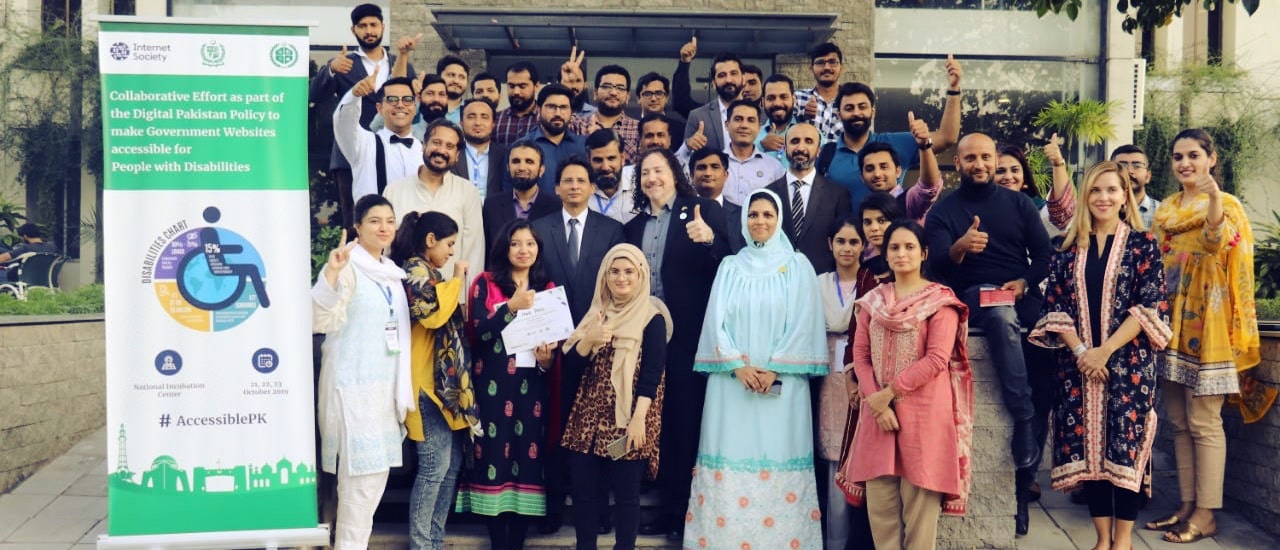In a bid to improve digital accessibility in Pakistan – a country with about 30 million persons with disability (PWDs), according to the World Health Organization – we recently partnered with the Ministry of IT (MoIT) and the National IT Board (NITB) so that more existing government websites could include accessibility features and future websites could incorporate such designs. We set out to make five websites more accessible – as a start – and are already seeing encouraging results.
According to local study and research paper, a majority of websites in Pakistan, including government, are not accessible for PWDs. PWDs face various challenges in using websites based on their impairment.
For example, persons with visual impairments can face compatibility challenges when screen reader software is used to access visual displays that are not labelled or hyperlinks that do not make sense when read out of context. Those with low vision are not able to access websites that cannot be adjusted for font type and size, contrast, and use of colors, and individuals who are deaf are not able to understand the narration in an online video if it is not properly captioned.
As part of this commitment given by the government, we organized a 3-day training workshop in Islamabad for web developers/administrators (particularly from government departments). The workshop hosted an extensive learning experience environment, using various tools, techniques, and practical demonstrations. David Berman, an expert in accessible communications design, web strategy, analysis, and training, and his team lead the training covering introduction to web accessibility standards, assistive technologies, good design practices, W3C Web Content Accessibility Guidelines (2.0, 2.1) success criteria, auditing models, and how to make accessible documents for websites.
It was the first of such training in Pakistan, and we were not surprised to hear from the participants that they never heard, nor were they familiar with these website accessibility guidelines and practices. The workshop participants took a keen learning interest, calling the workshop as an ice-breaker to enable accessible websites in Pakistan. I recall Muhammad Shafique, who is visually impaired, saying: “the workshop is game-changer. It made government realize that PWDs require equal access to public websites, to feel part of an inclusive digital society. We are already behind many countries in digital accessibility, but as they say it’s never too late.”
We also witnessed some great commitments from the Ministry and NITB senior officials in reference to recently approved Digital Pakistan Policy that lists several policy measures to enable digital accessibility for PWDs. They labeled the workshop as a beginning towards implementation of Digital Pakistan Policy, gave affirmation to build a digitally accessible environment, and invited open collaboration on similar initiatives.
The workshop has built local resources by training 30 website developers and professionals, who would now put their learning into practice by adding web accessibility features in government websites. They are also expected to train their peers to build further knowledge.
The journey has not been easy, but now that more government websites are poised to become more accessible and more website developers are more aware of the needs of the PWDs, the results convince us that it is right to try to improve digital accessibility in Pakistan! We hope that the government will continue its support towards an accessible Pakistan so that soon PWDs will benefit from information and services available on all public websites.
The Internet is for everyone! Visit the Accessibility Toolkit page to learn how you can contribute to a more accessible Internet and join A11ySIG!

